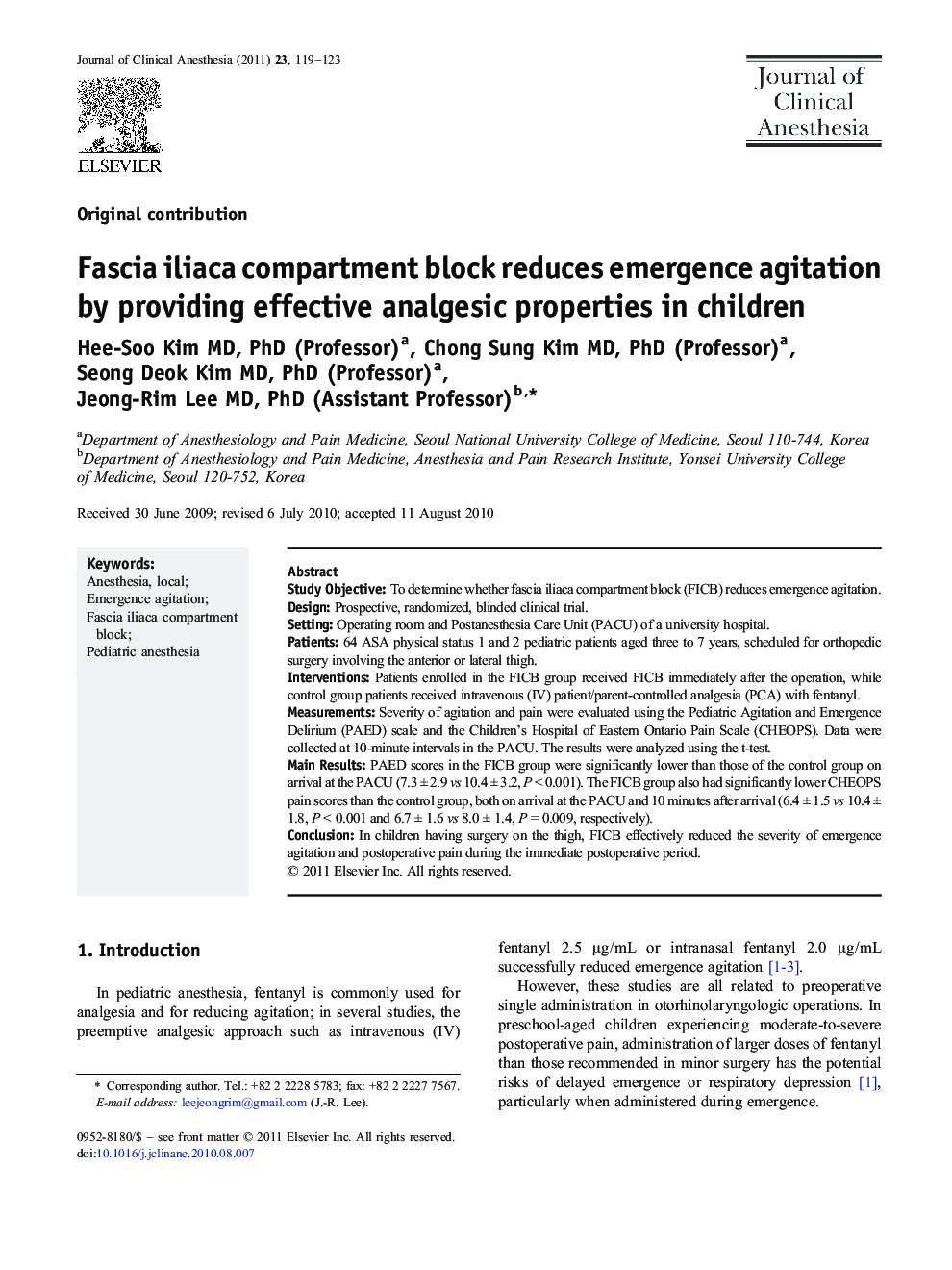| Article ID | Journal | Published Year | Pages | File Type |
|---|---|---|---|---|
| 2763474 | Journal of Clinical Anesthesia | 2011 | 5 Pages |
Study ObjectiveTo determine whether fascia iliaca compartment block (FICB) reduces emergence agitation.DesignProspective, randomized, blinded clinical trial.SettingOperating room and Postanesthesia Care Unit (PACU) of a university hospital.Patients64 ASA physical status 1 and 2 pediatric patients aged three to 7 years, scheduled for orthopedic surgery involving the anterior or lateral thigh.InterventionsPatients enrolled in the FICB group received FICB immediately after the operation, while control group patients received intravenous (IV) patient/parent-controlled analgesia (PCA) with fentanyl.MeasurementsSeverity of agitation and pain were evaluated using the Pediatric Agitation and Emergence Delirium (PAED) scale and the Children's Hospital of Eastern Ontario Pain Scale (CHEOPS). Data were collected at 10-minute intervals in the PACU. The results were analyzed using the t-test.Main ResultsPAED scores in the FICB group were significantly lower than those of the control group on arrival at the PACU (7.3 ± 2.9 vs 10.4 ± 3.2, P < 0.001). The FICB group also had significantly lower CHEOPS pain scores than the control group, both on arrival at the PACU and 10 minutes after arrival (6.4 ± 1.5 vs 10.4 ± 1.8, P < 0.001 and 6.7 ± 1.6 vs 8.0 ± 1.4, P = 0.009, respectively).ConclusionIn children having surgery on the thigh, FICB effectively reduced the severity of emergence agitation and postoperative pain during the immediate postoperative period.
